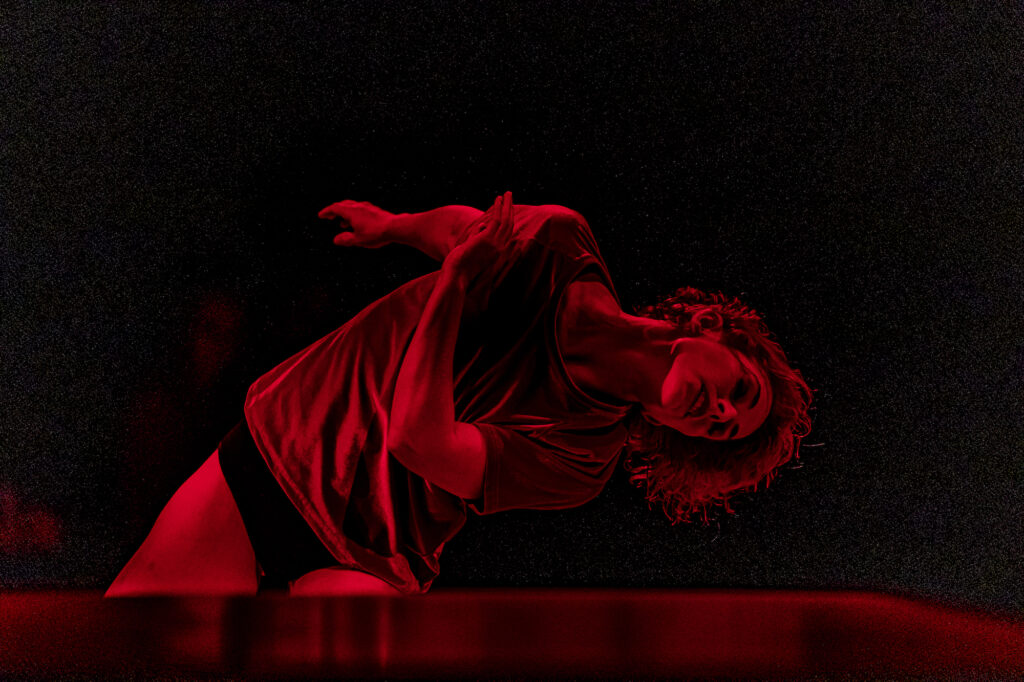Solo dance work JULIA is a work for our times, a powerful statement of feminist resistance and rage, with a glimmer of hope, writes Nina Levy.
A dance work for our times
23 May 2021
- Reading time • 6 minutesDance
More like this
- How to watch ballet
- STRUT Dance comes of age
- Fairytale leaps to life with fun twist
JULIA, Steamworks Arts ·
Studio Underground, State Theatre Centre of WA, 22 May 2021 ·
Julia Gillard is, perhaps, lauded as much for her 2012 misogyny speech as she is for being Australia’s first female prime minister.
While local director Sally Richardson credits the speech as being the starting point for JULIA, a contemporary dance solo made in collaboration with performer Natalie Allen, the work extends both backwards and forwards from that moment. The result is a powerful statement of feminist resistance, rage and, finally, a glimmer of hope.
At the same time, it’s also a vehicle for the talents of an extraordinary dancer, Natalie Allen. Allen first gained national attention for her technical prowess but 12 or so years into her professional career, her artistry matches her formidable physicality.
Though JULIA is interspersed with numerous audio grabs from Gillard, other politicians and media commentators, and moves (loosely) chronologically from past to present, it remains true to its primary art-form, dancing between narrative, metaphor and abstraction.
From the outset, Allen’s Gillard is presented as confident and competent. Just as Allen is a dancer in total control of her game, so too is her Gillard. Underscored by an exhilarating combination of synth and beats, she is slinky and precise, her legs slicing the air as she navigates the central table that acts as a desk and a large podium. Surrounded by the audience – the work is performed in the round at the Studio Underground – she commands our gaze even when her back is turned to us.
Gillard’s on a knife-edge, however, as she manipulates a dangerous looking blade.
That metaphor continues as the soundscape turns ominous and she balances a stack of papers precariously on her head. Disembodied and distorted, the voices of media commentators are rattle-snake-like, in a dangerous sound swamp that’s skilfully designed by Joe Lui and Annika Moses.
It’s one of the most powerful scenes of the work, and its impact increases as the papers inevitably fall. As we hear those distorted voices jeering “Get rid of those bloody jackets,” and “You’ve got a big arse Julia,” she turns her body into a caricature, stuffing papers into her clothing to distort her figure. Hearing so many appearance-based, derogatory comments layered on top of one another is deeply shocking and highlights the degree to which such comments were not interrogated at the time. The red light that bathes the conclusion of this scene feels like blood.

Also moving is a song of quiet desperation and rage, composed and performed by Rachael Dease (not live), which permeates the room as Allen slowly and carefully places one foot in front of the other, her spine curled, her arms outstretched.
Just as the layering of gender-based abusive comments from fellow politicians and the press is shocking, the sound grabs from Gillard, as she accepts and later concedes power, are striking in their dignity.
In contrast, the final section of JULIA sees a more fictionalised interpretation of Gillard channelling the anger of the 2021 Women’s March 4 Justice. Though JULIA’s creative developments began in 2018, this last scene, obviously, is a more recent addition. Unsurprisingly, then, it doesn’t feel as refined and distilled as the rest of the work.
Nonetheless, in a bright red wig and blue suit, lit to glow, Gillard seems like a super-hero in this last, explosive scene, which is peppered with snatches of her misogyny speech. Though powered by rage, the final image, of Gillard standing on top of the table, her fist raised, feels fuelled by hope as well.
Whether eyeballing audience members, rocketing across the desk, reeling from invisible blows that spiral her to the ground, twitching as though manipulated by unseen strings, vibrating with rage or extending her middle finger to the world, Allen gives a bravura performance, one that marks her as a true star and an artist of courage and stamina.
Under Richardson’s direction the pair make a compelling creative team, ably supported by the talents of designers Lui and Moses, and associate artists Samantha Chester (movement) and Humphrey Bower (dramaturgy).
JULIA is a work for our times, a work that channels the rage of women as we realise that enough is enough.
Update – York Festival season 2022
JULIA plays York Festival, 1-2 October 2022
JULIA plays the Studio Underground at the State Theatre Centre of WA, 20-29 May 2021
The production will head to Albany Entertainment Centre, 4-5 June 2021.
Pictured top is Natalie Allen in ‘JULIA’. Photo: JLG Photographics
Like what you're reading? Support Seesaw.






